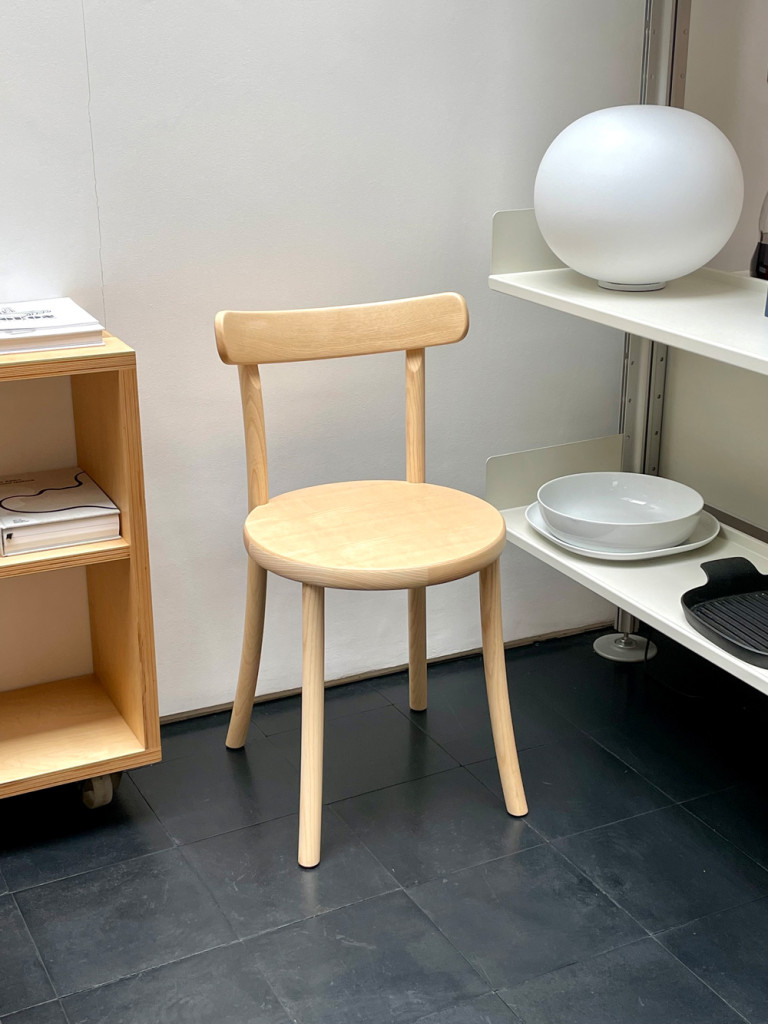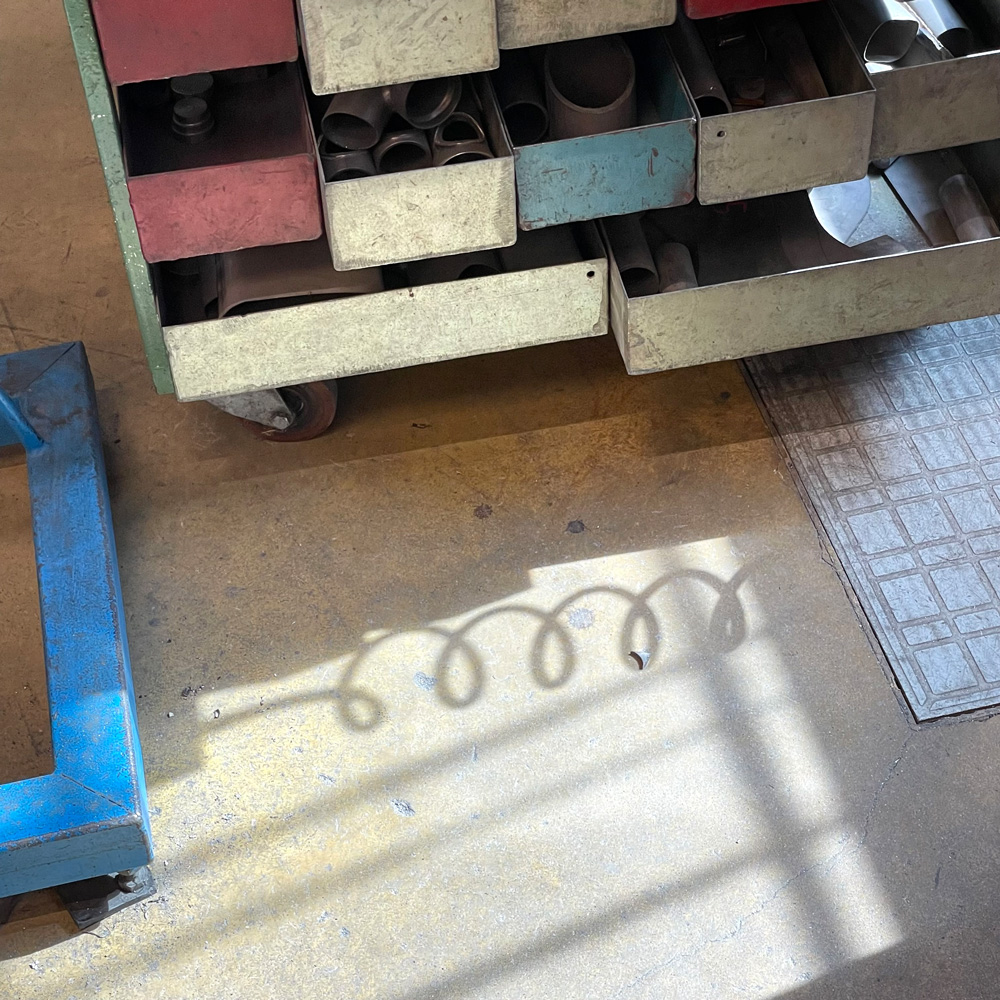Jasper Morrison has had a long and special relationship with photography, which is unusual for an industrial designer. As far back as 1988, he let—mostly historical—photos speak for him: His visual lecture “A World without Words”, composed of 160 slides, filled up two Kodak Carousels and was later turned into a book by the same name. Today he publishes and comments photos on his website, www.jaspermorrison.com, and on his Instagram feed, that is followed by over 125,000 people around the world. We wanted to know more about his thoughts on the topic.
Interview by Gerrit Terstiege

Jasper, do you remember being especially drawn to photographs in your childhood or teenage years? What got you started to take images more serious than the usual industrial designer?
The first book I bought with my own money was on Pop Art. It was full of very direct imagery, like Andy Warhol’s paintings of photographs. Looking at that book I became very interested in how and what images communicate. Not long after that I started taking photos.
Now that photography has become a daily habit to many—the smart phones of most people today are filled with tens of thousands of pictures. You however make a special use of photos. When looking through your instagram feed, we see simplicity, poetic solutions, vernacular absurdities and good humour … Does this roughly sum up the goals you have for your insta feed?
My instagramming is quite random, but yes, I recognise those categories. I do also post designs and occasionally historic material. My general goal is to share observations which seem interesting and/or meaningful. Sadly, Meta have screwed up Instagram with their push to get people watching video clips. The simplicity and purity of the Instagram concept has been contaminated by commercial and video interruptions. So I don’t post as often as I used to.

Have you ever regretted posting a picture, triggering the wrong reactions?
I always think I’ll get thousands of likes when I post on Instagram. Sometimes it works but other times it can be disappointing. I found out people don’t much appreciate photos of plants …
What makes a photo meaningful for you?
That’s a hard question to answer, I’m not sure but meaningful photos announce themselves very quickly. You can look through images one a second, and then suddenly one will stop you. It has something to do with being aware of what you’re looking for and how well tuned your eyes and brain are.



I remember my professor Michael Erlhoff often saying: „Only a bad picture is a good picture,” meaning that an image can be strong despite obvious technical flaws. Would you agree?
Up to a point, I mean there are billions of bad photos that are just that, bad. A bad photo which is pleasing or interesting to look at is most likely a good photo in disguise, I don’t think there are many accidentally bad photos that are good.
In 2014, your book “The Good Life – Perceptions of the Ordinary” was quite a surprise to me. Almost every picture in it showed a somewhat special scene, still life or object … like a chandelier made of plastic bottles in a street in Pondicherry, India. Or a Paris junkshop window with a very odd composition of things. Will there be an updated version of that book anytime soon?
I don’t think so, it was an exercise in describing a way of observing everyday life and extracting the good things from it. Design schools don’t put enough emphasis on the importance of observation and analysis of everyday material. It is the everyday that we designers work towards improving, and if you don’t understand what’s good and bad about the existing, how can you know what needs replacing? I think of The Good Life as an exercise book for design schools.



In your foreword of The Good Life you mention a literary book: George Perec´s Life: A User´s Manual. It is both experimental and innovative, yet focussing on very normal places and things in a house. Should design students generally be more culturally interested? And if so, what difference would that knowledge make when they design something?
They should yes, as a student I discovered that watching a great movie, reading a good book, seeing an intreresting exhibition, walking around and looking at great architecture all gave me a lot of energy and inspiration. If you don’t have a strong curiosity you probably will find it hard to be a designer.
Designers have to deal with photography not only as a way to collect, save and memorize inspirations, but also as a means to communicate and advertise what they have created. Have you ever been angry or frustrated about the way one your products has been pictured by a company or magazine?
Oh yes, all the time. It’s very painful, but impossible to control. One of the most common crimes is photographing chairs from seat height so you get no sense of it’s proportion, but it could also be a horrible set that the design is photographed in, or colour combinations …
Do you brief marketing people about the way you want things to be shown? For example as part of the packaging design or in advertising …
We do as much as we can, but it’s a partnership and you have to let the team make decisions in those areas.
Are there any professional photographers, current ones or of the past, whose work you like? The American photographer William Eggleston comes to my mind, or the German photographer Wolfgang Tillmans.
I’m a fan of both, also Irving Penn, and especially of Saul Leiter. Post iPhone, I’m afraid photography has almost ceased to be a career option.
Tell me a about Leitner, please, as he is not that well-known. What is different about his view of the world?
I love his photos, they’re incredibly poetic, romantic even, beautiful colours, great composition, the ordinary moment where real beauty can be found.

One last question: I remember a very strong, long-running advertising campaign that Vitra did together with the Swiss photographer Christian Coigny in the 1980s and 1990s. It was called the “personalities campaign“, showing stars like Miles Davis, Audrey Hepburn, Allen Ginsberg or Billy Wilder sitting on Vitra chairs. What were your thoughts when you saw the photograph of the great American Pop Artist Jasper Johns sitting on a Jasper Morrison, respectively your Plywood Chair? While Pop Art was an early influence to you …
I think what I loved about Pop Art and learned from it was the idea of reproducing (manufacturing), selecting ordinary subjects from everyday life and celebrating them, it was very inspiring to a young art student without many of the more typical artistic skills. And yes, you’re right about the Vitra campaign, it was an ingenius way to attract people´s attention and raise the status of those chairs, giving them individuality even though they were made in thousands! I could imagine Jasper Johns chose my Plywood Chair because it was the least commercial of all Vitra’s chairs! But maybe he didn’t choose it! Either way, I was flattered to have the chair associated with such a grand artist.
Jasper Morrison
The British designer Jasper Morrison was born in London in 1959 and founded his design studio Jasper Morrison Ltd. in 1986. To this day, Jasper Morrison Ltd. works with renowned manufacturers and has branches in Paris and Tokyo.
Jasper Morrison is considered one of the most successful designers of our time. His reduced, elegantly designed objects appear unpretentious, they are formally unobtrusive and are maximally focused on their usefulness. Morrison has always been able to project his understanding of design onto different areas of life. The spectrum of his work ranges from furniture designs for brands such as Cappellini and Vitra to electronics and the design of the tram in Hannover, to name just a few examples.
More on ndion
More articles on the topic of design
Share this page on social media:

